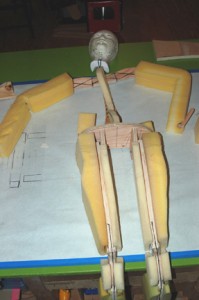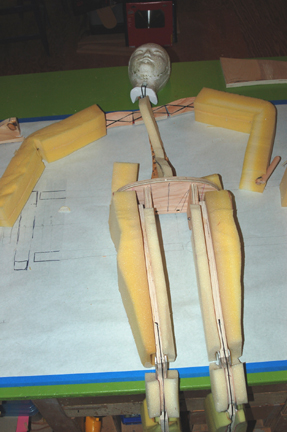Research is a vital skill for a props person. We may be given a vague description of an object or item and be expected to build something that is either historically accurate, or something that looks “correct”. For example, we all know what a dog looks like, but when we sit down to sculpt one, our minds become incredibly blank; details like the shape of the head, the proportion of the features, and how parts transition between each other are what will sell the prop. Even when a director or designer provides us with full drawings or draftings, we may still need to do research of our own to fill in the blanks or flesh out the specifics.
Tag Archives: Resources
Seattle Children’s Theatre Props Shop
The Seattle Children’s Theatre blog has a good post up about the props for A Tale of Two Cities. Edie Whitsett, the properties shop manager, describes the amount of historical research they did for the show. More interesting is how they used the research. Sometimes they went with the most historically accurate objects, but other times, they adapted it to better suit the needs of the production. Edie puts it best in the article:
You have to maintain a balance between historical accuracy, the desired visuals and the technical demands of the play.
There is also an earlier post which has great process shots as they build a fake corpse for Ophelia.

Props Timelines
If you haven’t already found it, be sure to check out the History of Props: A Timeline of Props and Product Usage. If your show is set in 1879, and you need to know whether toilet paper rolls had perforated sheets*, then this is the site for you.
Also, if you head on over to the Designboom history page, you can dig through any number of other historical product timelines, such as the history of shopping carts, the origin of rocking chairs, and a short history of anatomical maps.
If you have any other good historical research resources, let me know. Good research is every prop person’s duty.
*perforated toilet paper rolls were first produced in 1877.
Ross MacDonald

I came across the props portfolio for Ross MacDonald. He has done paper props for films such as National Treasure, Mr. Brooks, and Seabiscuit. His portfolio is not only well-illustrated, but contains a lot of information about how he went about creating his props. If you ever think you are over-researching your props, chances are, you haven’t been as obsessive as Mr. MacDonald. Have you ever submitted a Freedom of Information Act to obtain an FBI file from the Lincoln assassination to replicate John Wilkes Booth’s diary? Probably not.
Using Flickr for Visual Research
Flickr, if you don’t already know, allows people to share photographs. It’s a massive website, and you can easily get lost. I’ve broken it down to help you navigate around.
- The Commons. The Commons is a place where organizations can post their massive image libraries. Some organizations include The Library of Congress, The Smithsonian, and the New York Public Library. Most of the images are documentary, so it is a good source for primary research into historical time periods. The organizations do a fair job of organizing their images, making specific pictures easy to find. Another great thing about the Commons is that many of the photographs are in the Public Domain (check each one to make sure), allowing you to use the image itself in a show without a license.
- Places and Map. If you need photographs of a certain place, you can use these to find (usually contemporary) pictures taken there.
- Groups. Users on Flickr can create their own groups, where they post pictures related to whatever the theme of the group is. Some groups are devoted to specific subjects; for example, you can find a group for vintage kitchen items, medieval combat, or battlefields. It’s not just for photographs; you can find vintage illustration, vintage cigarette ads, or maps and charts.
- Tags. Flickr users can add keywords, or “tags” to their pictures to make searching for them easier. For instance, you can see all photographs tagged with “furniture“. This gives a lot of results, but you can further revise your search by looking at “clusters“, which are common groupings of related tags. For instance, furniture is clustered with “vintage, antique, old“.
- Search. When all else fails, there’s good old-fashioned search. You can search through tags or descriptions. This is also where you can search for multiple tags, or search for a photos where one word appears and another doesn’t.

